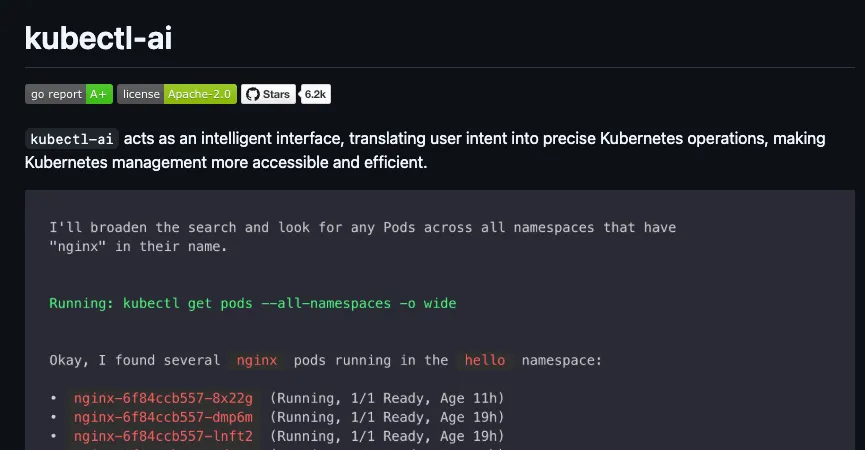
Introduction
The biggest advantage of kubectl-ai is that when an alert occurs in your cluster, you can use it directly to analyze the cause. If you have the capability and budget, you can even integrate kubectl-ai into your alerting system to achieve automated analysis and response.
What is kubectl-ai
kubectl-ai is an AI assistant plugin designed for Kubernetes users. It can convert natural language (such as Chinese or English) into kubectl commands, helping users manage and operate Kubernetes clusters more efficiently. By integrating AI capabilities, kubectl-ai can understand user intent, automatically generate, interpret, or optimize kubectl commands, lowering the barrier to using Kubernetes and improving both operations and development efficiency.
Project Address
https://github.com/GoogleCloudPlatform/kubectl-ai
Usage
First, install the plugin:
kubectl krew install ai
My backend uses one-hub:
https://github.com/MartialBE/one-hub
Set environment variables and start:
export OPENAI_API_KEY=xxxx && \
export OPENAI_ENDPOINT=https://xxxx.xxxx.xxx/v1 && \
kubectl-ai --llm-provider=openai --model=xxx
You can ask questions directly in natural language, for example:
Hey there, what can I help you with today?
>>> How many nodes are in the cluster?
Running: kubectl get nodes
There are 33 nodes in the current cluster.
kubectl-ai also supports a simple web interface:
kubectl ai --llm-provider=openai --model=gpt-4.1 --user-interface html
Of course, MCP server mode is also supported:
kubectl ai --llm-provider=openai --model=gpt-4.1 --mcp-server
Feel free to follow my blog at www.bboy.app
Have Fun
